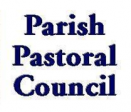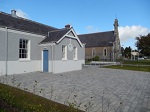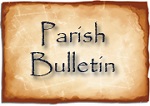“I am the resurrection and the life. If anyone believes in me, even though they die they will live, and whoever lives and believes in me will never die.”
Confronted with the mystery of death, human words are totally inadequate. The only word that carries authority, reassurance, comfort and hope at a time like this is the Word of God. Our task in the course of the Funeral Liturgy is to let the word speak to the hearts of all who are grieving, so that all might hear and be comforted by the Christian message that “life is changed not ended; when the body of our earthly dwelling lies in death, we gain an everlasting dwelling place in heaven.” (Preface for the Dead I)
Planning Your Loved One’s Funeral Liturgy.
The Church encourages the bereaved to become fully involved in the planning of the funeral liturgy of a loved one. It is the final journey of your loved one. In the liturgy, we celebrate the life of faith of our loved ones; we commend them to the Lord, we support and pray for all those who mourn, and we seek strength in the promise of the Lord that he will not forget his own. In planning the liturgy, the following points should be given consideration:
- Provide the priest with some biographical information about your deceased loved one that will help him prepare the funeral homily. (Please see note on the practice of eulogies in the Diocese of Meath).
- Select readings for the funeral Mass. Ashbourne-Donaghmore Parish provides a booklet to assist families in choosing the readings and prayers for the funeral Mass.
- Select the responsorial psalm. This may be included in the repertoire of the musician and singer.
- Choose or compose with the help of your priest the general intercessions, which come after the homily. In the general intercessions, we pray not only for the deceased and their family but also for all the dead and the needs of the wider community.
- Two family members should be chosen to bring the gifts of bread and wine to the altar at the Presentation of the Gifts after the Prayers of the Faithful. Keep in mind that the presentation of the gifts is not the time to carry up personal memorabilia. This should be done at the beginning of the liturgy where family members or friends bring up symbols representing the interests and life of the deceased.
- Choose hymns and music for the funeral Mass. The hymns chosen should be selected from those regularly sung during liturgical celebrations, expressing our strong belief in the resurrection. They should not include favourite secular songs or music of the deceased not appropriate for a funeral liturgy. This music can be played in the funeral home or at the graveside as mourners sympathise with the deceased’s family.
Hide information on Planning Your Loved One’s Funeral Liturgy.
The funeral has three principal stages or moments: the vigil and reception of the body at the Church; the central funeral liturgy, which normally includes Mass; and the rite of committal.
The Wake and Vigil for the Deceased
There has been a long tradition in Ireland of having a wake for the deceased. It is a time when the family and friends of the deceased “stay awake” to mourn the passing of the loved one, to share memories of their life, to accept the sympathy and support of the Christian community and to pray that the deceased may have eternal life. The wake normally takes place in the home of the deceased or in the funeral home. There are a number of prayer services that can take place during the wake. The wake normally ends with the prayers associated with “The Vigil for the Deceased.”
Reception of the Body at the Church
The rite of reception of the body at the church may take place on the evening before the funeral Mass or on the day of the funeral itself. This ceremony has great significance because the church is the place where the community of faith gathers for worship. It is the place where people enter into new life through baptism and participation in the Eucharist. This rite begins with the sprinkling with water at the church door, the procession into the church, followed by readings and prayers. The use of Christian symbols is very striking in this rite of reception:
- The Paschal Candle is placed close to the coffin in the church reminding us of Christ’s presence among us and of his victory over death, a victory in which we share through our baptism.
- Holy Water is used a number of times throughout the days of mourning and the wake and funeral. It reminds us of our baptism and the baptism of our deceased loved one.
- A Pall may be placed over the coffin by family members when it is received into the church. It is a large white cloth that covers the coffin during the liturgy. It can be draped over the coffin by members of the family. It symbolises the white robe put on the newly baptised to symbolise their new life in Christ. It is a reminder that in the sight of God we are call equal.
- A Bible or Cross may be placed on the coffin. The Bible reminds us that Christians are called to live by the Word of God, and that it is by being faithful to that word that we gain eternal life. The cross reminds us that Christians are marked by the sign of the cross in baptism, and that it was through his suffering on the cross that Jesus won for us the promise of resurrection.
- Incense is used to honour the body of the deceased, who through baptism became a living temple of God’s presence. It is also a sign of the community’s prayers for the deceased rising up to heaven, and a sign of farewell.
(Extract from: A Celebration of Life – When a Loved One Dies – Redemptorist Publications)
The Funeral Mass and Final Commendation
The funeral Mass is the central liturgical celebration for the deceased. It is similar in structure to the Sunday Mass. The priest or bereavement support team will assist the families in planning and preparation. The focus is on separation, on letting go. But the focus is also on hope, as we look forward to the promise of eternal life.
The Committal
The body is taken to its final resting place. The priest leads the community in a short prayer service as the coffin is lowered into the grave and following tradition a decade of the rosary is recited. This service concludes with the gathered offering their sympathies to the family.
Diocesan Policy on Eulogies at Funeral Masses
The Council of Priests adopted the policy that panegyrics (eulogies) at the end of the Funeral Mass should not be allowed in the Church. The appropriate place for such words, if some family member or friend wishes to speak, is in the funeral home, the graveside as an oration or in a Mass Leaflet produced for the Funeral Liturgy. All experiences suggest that where such contributions have become part of the funeral celebration the central purpose of the funeral rite is devalued and diminished. In such instances, the emphasis was on celebrating the life of the deceased rather than a commendation to the mercy and forgiveness of God. The faith understanding of death is moved more and more to the background.
A second reason why such a decision was made was that on many occasions the words spoken were inappropriate and often caused embarrassment. It would be grossly unfair to ask priests to differentiate between families at such a sensitive time. Any words of thanks that the families may wish to express, e.g. to hospital staff etc. can easily be included in the Prayer of the Faithful. Upholding the integrity of the liturgy is an obligation that rests on all priests.
Hide information on Diocesan Policy on Eulogies at Funeral Masses
Month’s Memory Masses and First Anniversary Masses
The Month’s Memory is an opportunity to once again commend the deceased to our loving God. It is celebrated in an atmosphere of prayerful remembrance, of gratitude and of hope in the resurrection. The booking of such Masses should be made through the Parish Office at 01 8353149.
Hide information on Month’s Memory Masses and First Anniversary Masses








